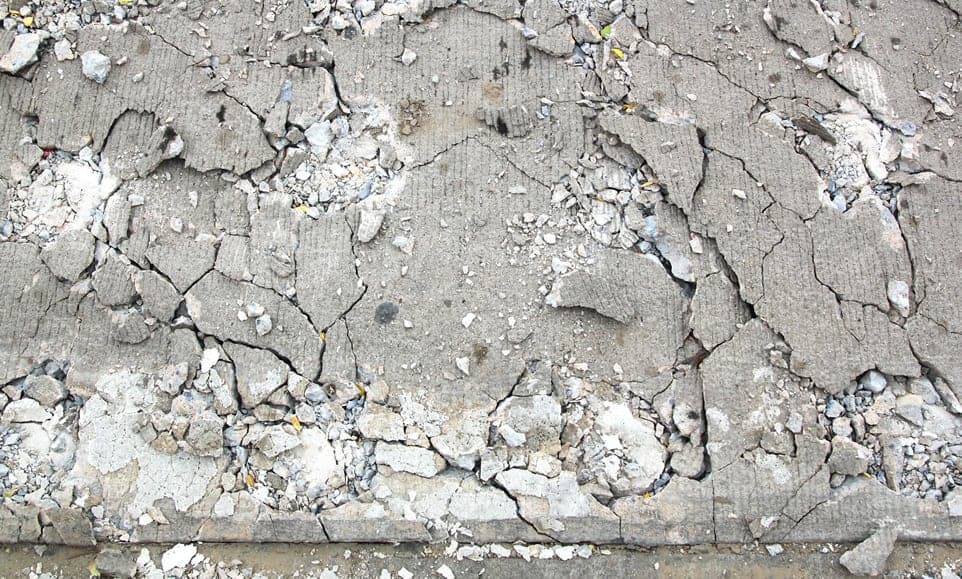Ice Melt environmental impact is important when making choosing which deicer chemicals to use. It is not enough to solely balance cost and effectiveness. One must consider the corrosiveness to vehicles, damage to infrastructure, and the effect on the natural environment including vegetation, soil, animals, people, and water systems.
As we all know, there are no ice melt products that are absolutely environmentally friendly. We are left with having to answer, “Which ice melt product provides the best results with the least environmental impact?” However, we must answer this question with the understanding that creating and maintaining safe driving and walking conditions is paramount.
Ice Melt Effective Range¹
- Sodium chloride (NaCl) — 14°F to 34°F (-10°C to 1°C)
- Calcium chloride (CaCl₂) — -13°F (-25°C)
- Salt mixed with Calcium chloride (NaCl and CaCl₂) — 0°F to 32°F (-17°C to 0°C)
- Magnesium chloride (MgCl₂) — 5°F (-15°C)
- Calcium magnesium acetate (CMA) — 23°F to 32°F (-5°C to 0°C)
- Sodium Acetate (NAAC) — -7°F to 14°F (-22°C to -10°C)
Ice Melt Impact on Soils²
- Sodium chloride (NaCl) — Moderate to High: Sodium accumulation breaks down soil structure and decreases. permeability and soil stability; potential for metals mobilization.
- Calcium chloride (CaCl₂) — Low to Moderate: Improves soil structure; increases permeability; potential for metals mobilization.
- Magnesium chloride (MgCl₂) — Low to Moderate: Improves soil structure; increases permeability; potential for metals mobilization.
- Calcium magnesium acetate (CMA) — Low to Moderate: Improves soil structure; increases permeability; potential for metals mobilization.
- Sodium Acetate (NAAC) — Low: Not strongly adsorbed to the soil.³
Ice Melt Impact on Water Quality²
- Sodium chloride (NaCl) — Moderate: Excessive chloride loading, metal contaminants; ferrocyanide additives.
- Calcium chloride (CaCl₂) — Moderate: Excessive chloride loading; heavy metal contamination.
- Magnesium chloride (MgCl₂) — Moderate: Excessive chloride loading; heavy metal contamination.
- Calcium magnesium acetate (CMA) — High: organic content leading to oxygen demand.
- Sodium Acetate (NAAC) — High: Likely to cause oxygen depletion of surface water.³
Ice Melt Brand Equivalent
- Sodium chloride (NaCl) — Rock Salt
- Calcium chloride (CaCl₂) — Peladow, Dowflake, ComboTherm
- Magnesium chloride (MgCl₂) — Mag Pellets, MGCL Pro-F Mag Flakes
- Calcium magnesium acetate (CMA) — Cryotech CMA
- Sodium Acetate (NAAC) — Cryotech NAAC
There is no way to eliminate risk. The key to providing the least environmental impact is good planning: matching ice melt product to the conditions, keeping snow and ice accumulation low, timely application of deicer, and proper distribution of chemicals. For more information on ice melt and environmental impact comparisons, please contact us.
References
¹ Environmental Effects of Deicing and Anti-Icing Chemicals (2011) Montana State University.
² Highway Ice Melting, Best Practices, Effect of Water & Natural Environment, Occidental Chemical Corporation, Retrieved 14 March 2016.
³ Evaluation of Selected Deicers Based on a Review of the Literature (2001) Colorado Department of Transportation.

